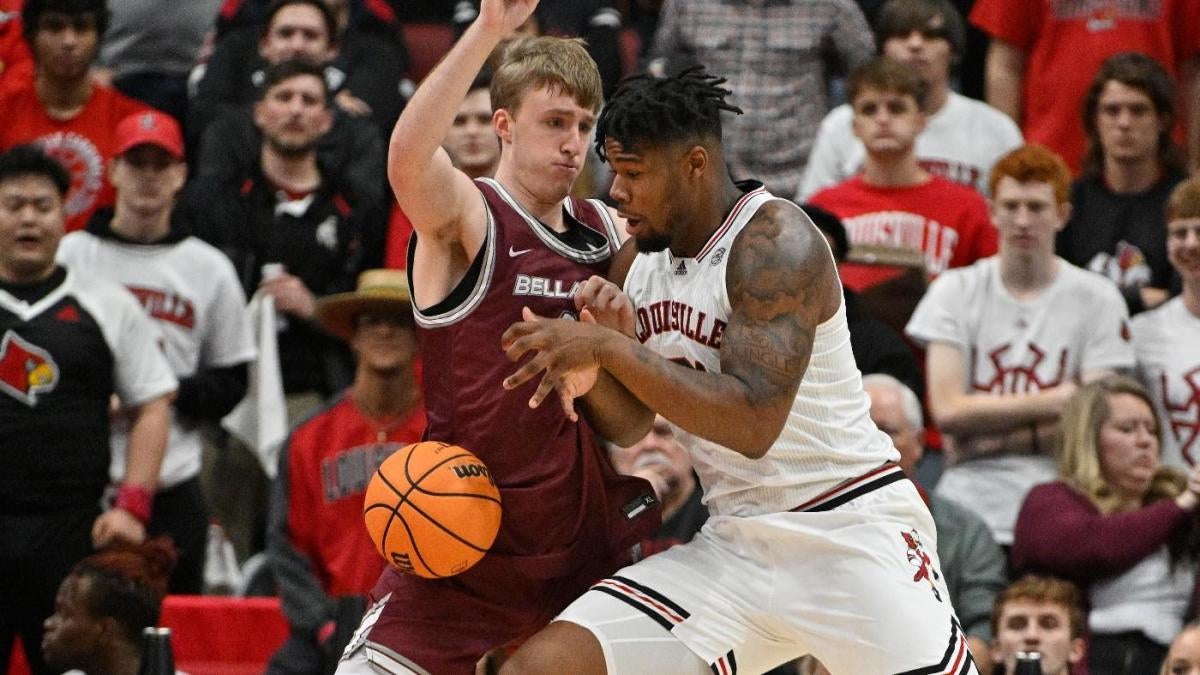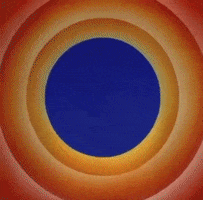
What's wrong with the ACC? Why Louisville, Florida State and others are struggling as conference play begins
The Cardinals and Seminoles are emblematic of the league as a whole
The Cardinals and Seminoles are emblematic of the league as a whole
By Zachary PerelesThe final ACC-Big Ten Challenge has come to an end, with the ACC winning 8-6. It was the ACC's first win in the Challenge since 2017, but take a step back from a series of individual games and you'll see there are major issues for what was once considered the premier conference in college basketball. The ACC ranks as the sixth-best conference in KenPom.com's Adjusted Efficiency metric, on pace to be its worst since the league expanded to its current 15 teams in 2013-14.
With league play starting this weekend, several teams are underachieving relative to what was expected, but two are particularly bad, so let's start there. Louisville is 0-7, not only its worst start since 1940-41, but the worst start by any ACC team since the conference formed in 1953. Florida State, at 1-8, is only slightly better, and it's the Seminoles' worst start since 1956-57. Both teams have to get things together in a hurry as conference play opens Friday.
Louisville (0-7)
Big issues: Everything, but especially turnovers and defensive breakdownsThe Kenny Payne era is off to a tough start. After starting the season with three consecutive one-point losses, Louisville has lost its last four by an average of over 25 points, with its "closest" game being a 19-point loss to Cincinnati. The Cardinals lost their ACC-Big Ten Challenge game against No. 22 Maryland 79-54.
Louisville's biggest issue is turnovers. Here are the numbers, out of 363 Division I programs:
| LOUISVILLE THIS SEASON | DIVISION I RANK (OUT OF 363) | |
|---|---|---|
| Assist-to-turnover ratio | 0.44 | 363rd |
| Turnover rate | 24.4% | 353rd |
| Assist percentage | 37.9% | 356th |
At the moment, Louisville doesn't have many answers, in part due to its roster construction. After playing shooting guard almost exclusively last season, El Ellis is playing point guard this season, and his 20.9% turnover rate is the highest among 41 players who have had at least 150 possessions this season, according to Synergy Sports.
Louisville compounds its turnover troubles with woeful transition defense. The Cardinals are allowing 20 points per game off turnovers and 15 points per game in transition; that second figure ranks 302nd in Division I.
As the first two clips show, the Cardinals' transition defense is rife with missed assignments and miscommunication. The last two clips, though, show something more concerning: a lack of effort and awareness. The third clip comes after Louisville actually scored. All five Cardinals are jogging back on defense, and only one is watching the ball. Maryland gets all the way to the basket completely unguarded. In the fourth clip, two different Texas Tech players go out of bounds to save a defensive rebound, and yet the Red Raiders still get a layup -- from Kevin Obanor, one of the players who started the possession out of bounds, no less.
Louisville should improve in some areas, and the hope would be that it starts with Ellis getting more comfortable at point guard. Fixing the effort and communication, though, may be a tough task.
Florida State (1-8)
Big issues: Shot creation and making shotsOver the last half-decade under Leonard Hamilton, Florida State has had a very stable identity: extremely long, athletic wing slashers, capable shooters, imposing post players and heady point guards. It's a combination of players who could win from beyond the arc or at the rim. This year, the Seminoles have their trademark height and athleticism, but they aren't owning either the paint or the 3-point line. Instead, they're taking -- and missing -- a ton of mid-range jumpers.
| FSU PCT OF SHOTS AND FG PCT | AT RIM | 2-PT JUMPERS | 3-POINTERS |
|---|---|---|---|
| 2018-19 | 39% of shots 63% FG pct | 24% of shots 32% FG pct | 38% of shots 33% FG pct |
| 2019-20 | 34% of shots 63% FG pct | 31% of shots 39% FG pct | 35% of shots 35% FG pct |
| 2020-21 | 38% of shots 64% FG pct | 28% of shots 36% FG pct | 35% of shots 37% FG pct |
| 2021-22 | 34% of shots 64% FG pct | 32% of shots 33% FG pct | 34% of shots 33% FG pct |
| 2022-23 | 33% of shots 60% FG pct | 35% of shots 33% FG pct | 32% of shots 32% FG pct |
Like Louisville, Florida State is trying to make do without a true point guard: Caleb Mills and Jalen Warley are splitting lead guard duties after both had traditionally played off the ball previously. The Seminoles are scoring 0.642 points per possession in pick-and-roll scenarios when the ball handler keeps the ball. That's 295th in Division I this season and on pace to be the Seminoles' worst since 2010-11.
As you can see in the chart above, the Seminoles aren't getting as many shots at the rim as usual (in part because their offensive rebounding numbers are way down), but even when they do get opportunities at the rim, too many possessions end like these two:
Florida State's at-the-rim shooting percentage is 193rd in Division I, on pace to be its worst in the last 10 seasons.
Other tough starts
Louisville and Florida State's shocking records are the ones that stick out, but those two are far from the only squads underachieving thus far this season. Here are some other teams struggling compared to expectations.North Carolina (5-3)
The Tar Heels have lost three straight -- tied for the longest losing streak ever by a preseason AP No. 1 team -- and their defense has been a big letdown. The Tar Heels are 50th in adjusted defensive efficiency after finishing 35th in that category a season ago.UNC ranks 224th in defending the 3-point line (34.7%), and though the Tar Heels ran into a hot-shooting Caleb Grill (7 for 11 from three in that game, 8 for 32 in all other games this season) and an Alabama team that made 16 of 38 triples, it hasn't all been bad luck. The Tar Heels rank 204th in Division I in terms of shot quality allowed. They were 27th last year. There's been too much dribble penetration allowed to ball handlers, which has led to lots of open looks surrendered.
